
|
Cormorant
|
||
|
Taken at Strathclyde Park on 23rd November 2021 using Nikon D500 with Sigma 600 mm zoom lens.
|

|
|
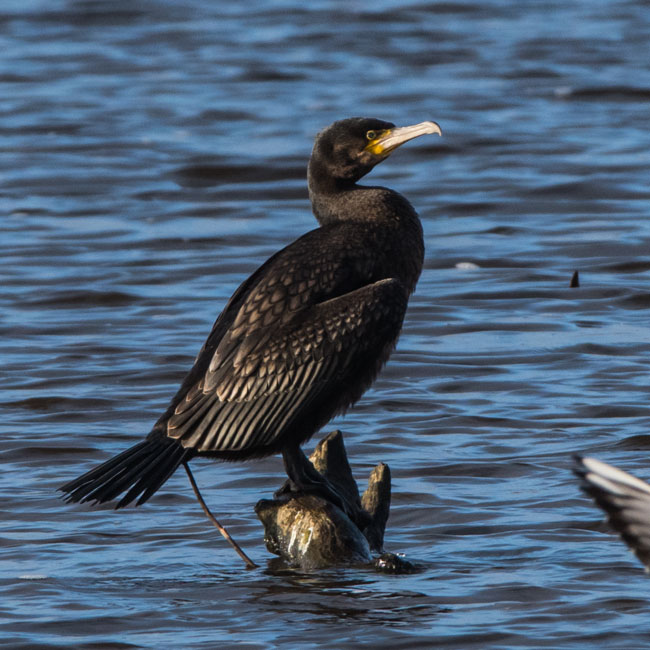
| Taken at Strathclyde Park on 2nd October 2020 using Nikon D500 with Sigma 600 mm zoom lens. |  |
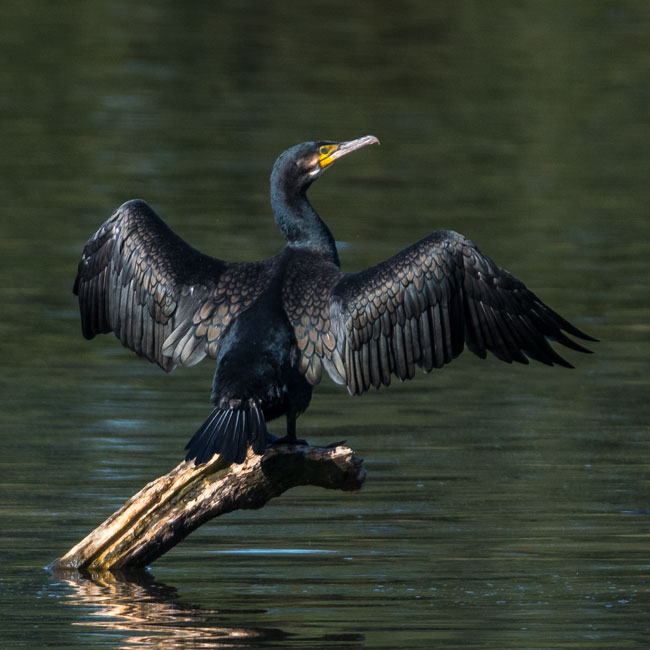
| Taken at Linlithgow on 29th January 2018 using Nikon D5200 with Sigma 600 mm Zoom lens. |  |
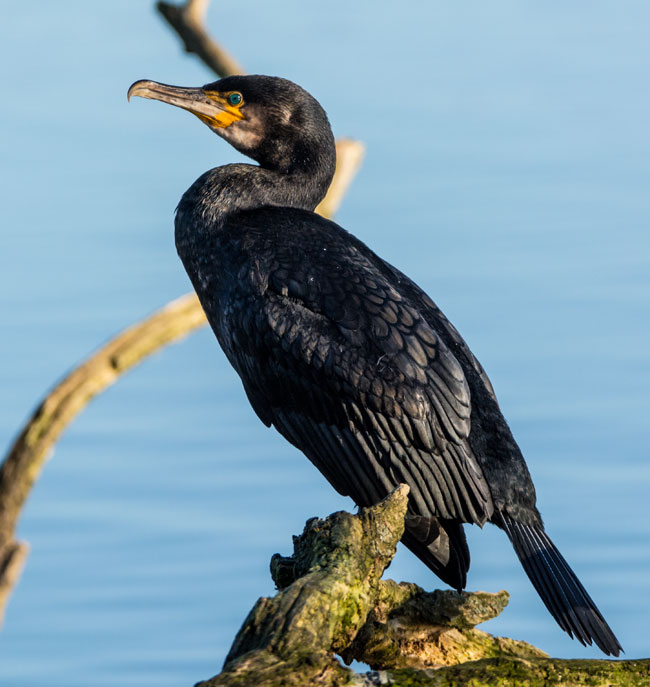
| Taken at Strathclyde Park on 8th February 2022 using Nikon D500 with Sigma 600 mm zoom lens. |  |
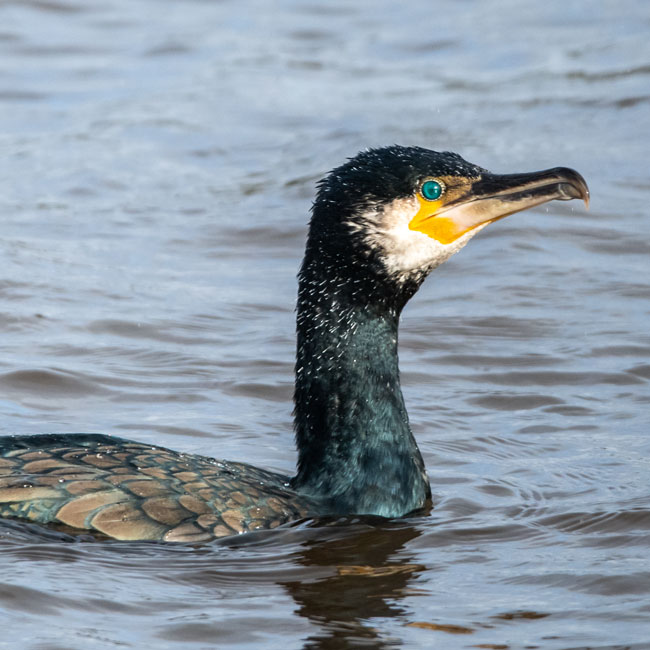
| Taken at Strathclyde Park on 18th July 2020 using Nikon D500 with Sigma 600 mm zoom lens. |  |
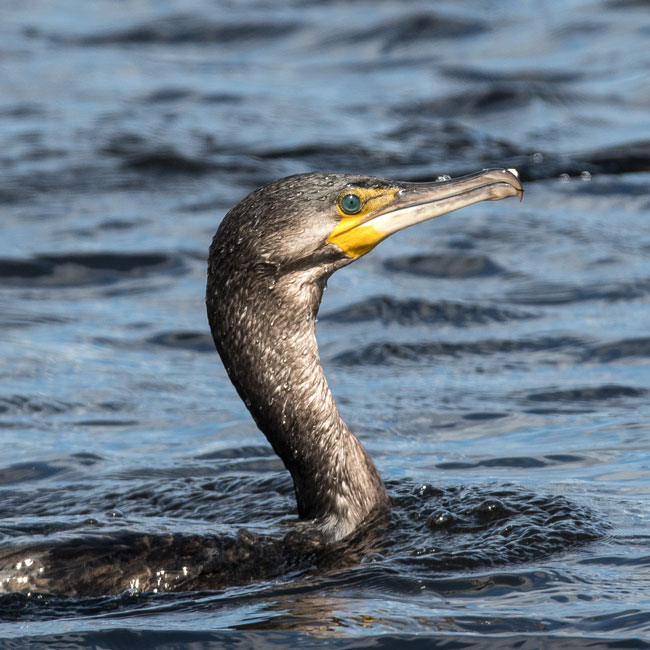
| Breeding Plumage Taken at Strathclyde Park on 27th February 2020 using Nikon D500 with Sigma 600 mm zoom lens. |
 |
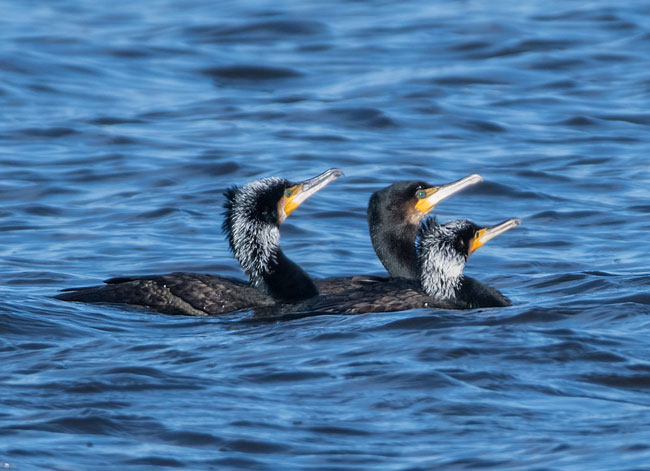
| Female in breeding plumage Taken at Ardmore Point on 24th March 2017 using Nikon D5200 with Sigma 600 mm lens. |
 |
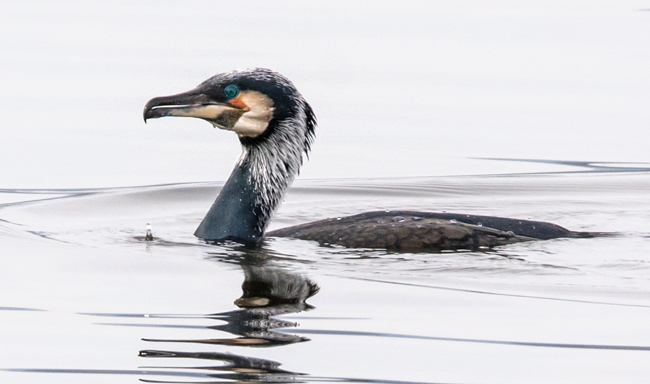
| Juveniles Taken at Morrison's Haven on 4th August 2023 using Nikon D500 with Sigma 600 mm zoom lens. |
 |
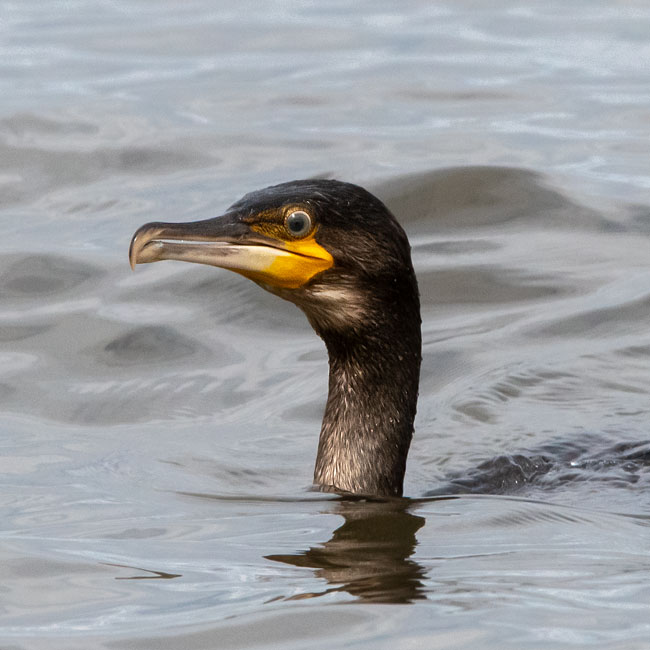
Taken at Baron's Haugh on 24th May 2022 using Nikon D500 with Sigma 600 mm zoom lens. |
 |
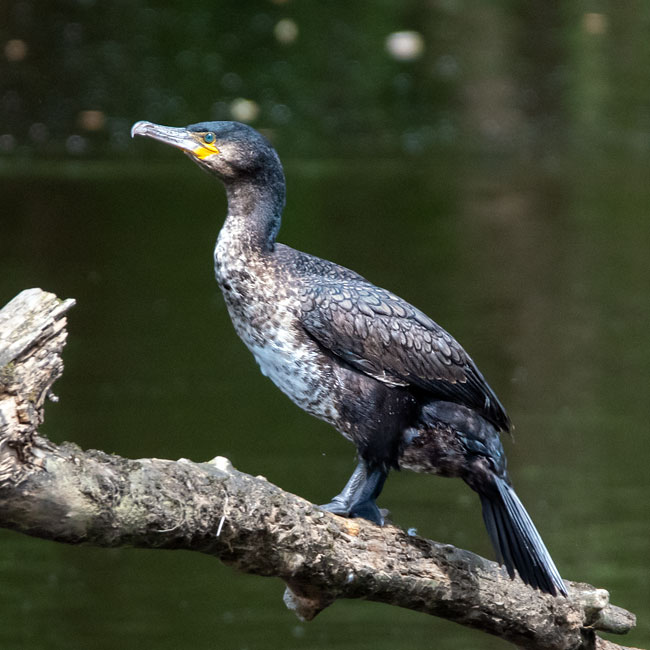
| Taken at Baron's Haugh on 13th September 2021 using Nikon D500 with Sigma 600 mm zoom lens. |  |
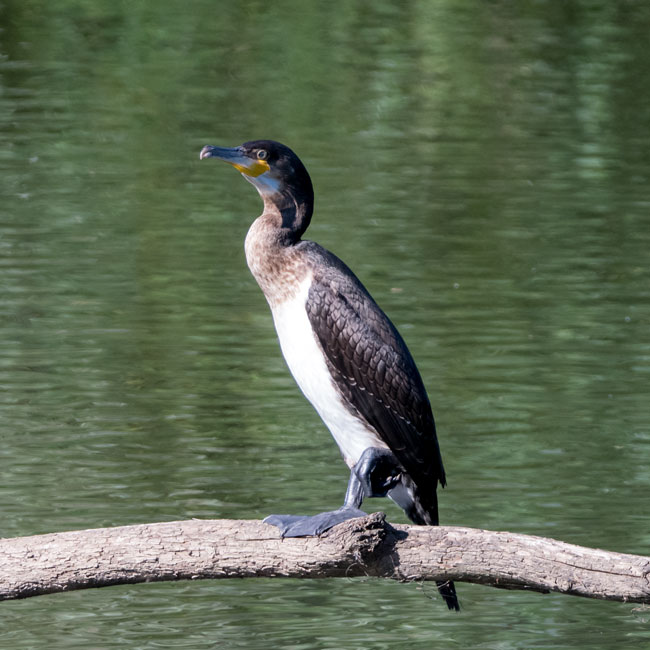
| Lunch Taken at Musselburgh on 18th October 2018 using Nikon D500 with Sigma 600 mm zoom lens. |
 |
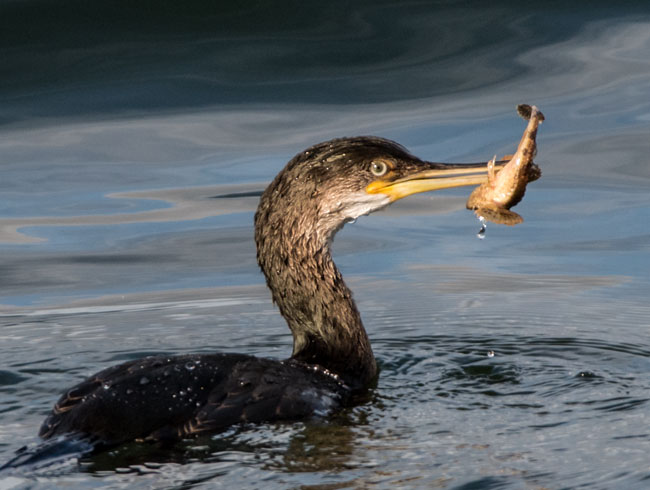
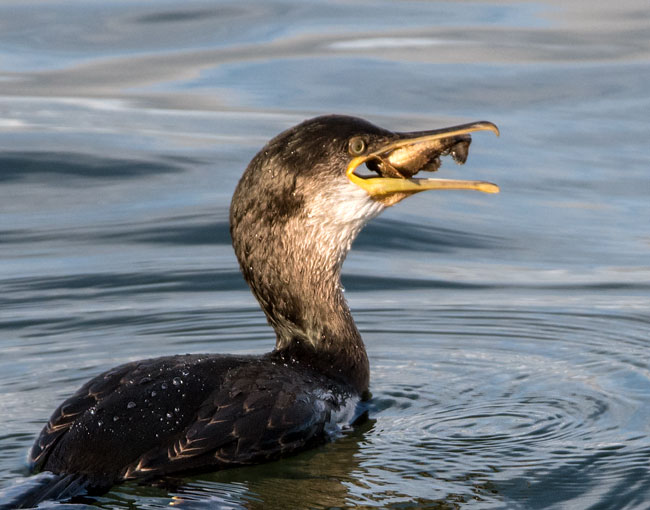
Taken at Baron's Haugh on 22nd December 2020 using Nikon D500 with Sigma 600 mm zoom lens. |
 |
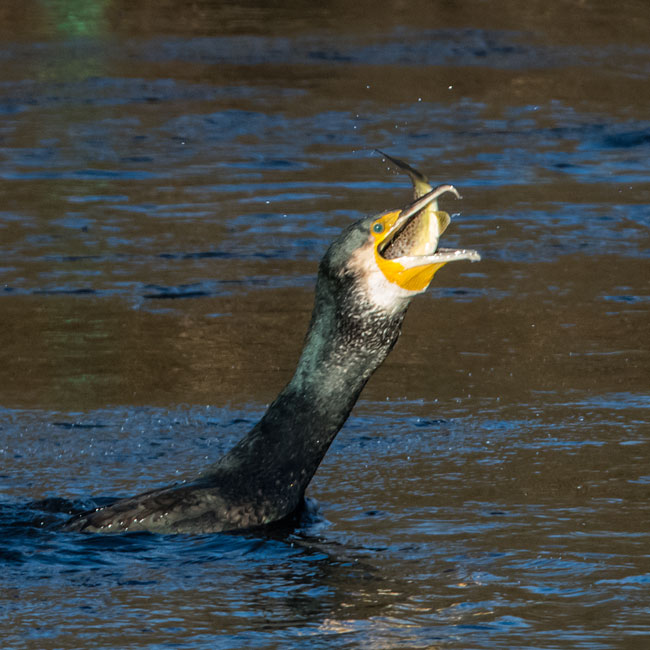
| Taken at Strathclyde Park on 22nd January 2024 using Nikon D500 with Sigma 600 mm zoom lens. |  |
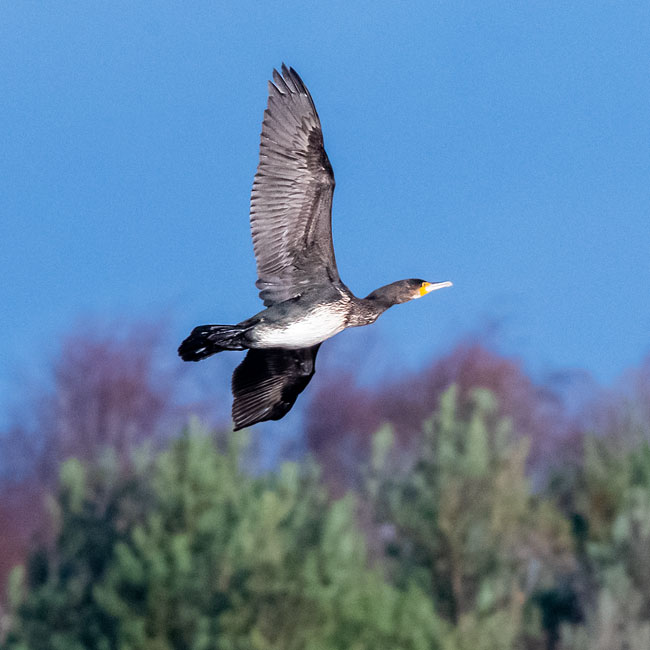
| Taken at Port Seton on 27th November 2022 using Nikon D500 with Sigma 600 mm zoom lens. |  |
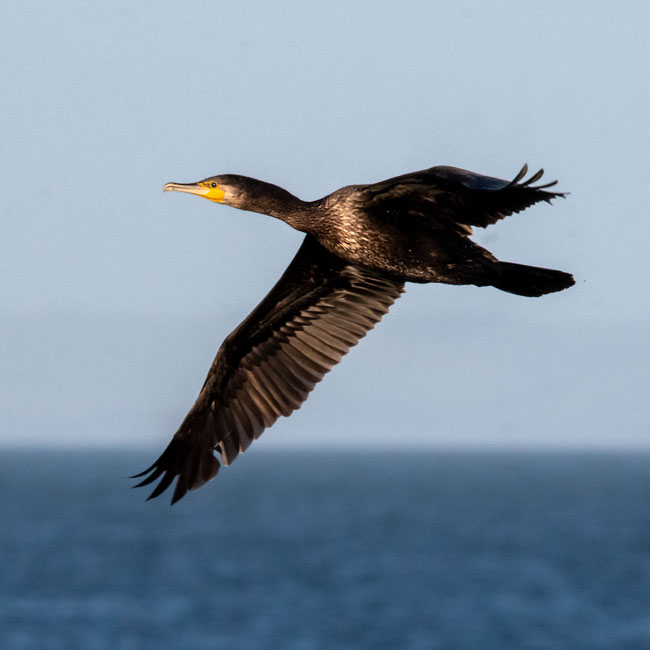
| Cormorant. |
| Species: Order: Family: Local Names: |
Phalacrocorax
carbo. Pelecaniformes. Phalacrocoracidae. |
| Site
Of Nest: Food: Plumage: Feature: Length: NestingPeriod: Eggs: |
Bulky stick nest in a tree or a cliff
edge. Fish, especially bottom-living flatfish and eels. Blackish, glossed with Blue and Bronze. In the Spring it has white streaks on it's head, a bold white throat and white patches on it's thighs. Humans have historically exploited cormorants' fishing skills. In China, Japan and Macedonia they have been trained by fishermen. A snare is tied near the base of the bird's throat, which allows the bird only to swallow small fish. When the bird captures and tries to swallow a large fish, the fish is caught in the bird's throat. When the bird returns to the fisherman's raft, the fisherman helps the bird to remove the fish from its throat. The method is not as common today, since more efficient methods of catching fish have been developed. 90 cms. April - May. 1 Brood. 3 - 4 |
| Voice: |